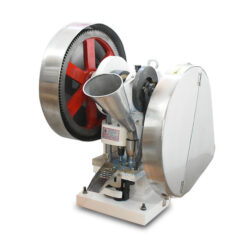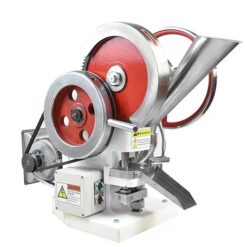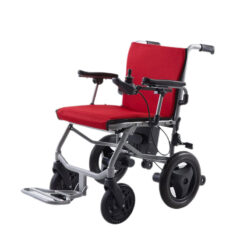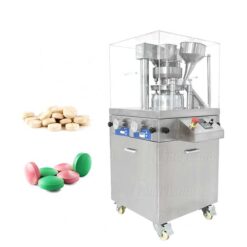-
×
Bestshoptheday TDP 6 Desktop Tablet Press – Automatic Single Punch Tablet Press Machine
-
Estimated delivery:
on 31 May - 3 June, 2024
$3,699.00 -
-
×
Bestshoptheday TDP 5 Desktop Tablet Press - Automatic Single Punch Tablet Press Machine
-
Estimated delivery:
on 31 May - 3 June, 2024
$3,099.00 -
-
×
Lightweight Electric Wheelchair Portable All Terrain Wheelchairs
-
Estimated delivery:
on 31 May - 3 June, 2024
$1,599.00 -
-
×
Bestshoptheday ZP-9A Rotary Tablet Press Machine
-
Estimated delivery:
on 31 May - 3 June, 2024
$6,599.00 -
-
×
Portable Wheel Chair Fot The Disabled 500w Motor Electric Folding Wheelchair
-
Estimated delivery:
on 31 May - 3 June, 2024
$3,798.00 -
-
×
Recline Electric Wheelchair Lightweight Power Wheel Chair
-
Estimated delivery:
on 31 May - 3 June, 2024
$1,899.00 -
Health & Beauty, Machines & Tools
Components of a Pill Tablet Press
If you’re looking for a pill tablet press, there are a number of different components that you should consider. These components include die sets, pre-compression rollers, and variable anvil settings. Each of these components is essential for the production of high-quality tablets. The die table is another important component of a pill tablet press. It is designed to hold the die in place and to keep the powder in place during the compression step.
Die sets
The die set is an essential accessory for a pill tablet press. Several types of dies are available for different tablet sizes. Some presses have spare universal die holders so that you can prepare more tablets at once. These types of presses also have adjustable ram strokes and are great for producing smaller tablets.
Most drugs are consumed in tablet form. This form makes them easier for individuals to take. As a result, the demand for tablet presses has increased. A pill press machine works by compressing powder and converting it into tablets. There are several different types of die sets, including a single-stage machine, a double-rotary press machine, and a bolus tablet press.
Anvil
Anvil is a component used in tablet press to support the die. The anvil is attached to a heavy screw post and can rotate to produce tablets with desired thickness. The press ram develops a force equivalent to approximately 50 to 1 pressure per inch. This force is sufficient to produce firm tablets from most types of powdered materials. The press is usually equipped with a binder to ensure the consistency of the finished tablets.
The Tablet Press is the ideal machine for the fabrication of pharmaceutical tablets. It is used in laboratories for pharmaceutical, biomedical, nutrition, and clinical operations. The machine includes die chamber, die plunger, and scale indicator to determine the hardness of the tablet. The die chamber and press can be set up for automated powder filling.
The die table contains an upper and lower punch. The upper punch is pushed downward into the die, while the lower punch is pushed upward. The tablet is then ejected from the die. The tablet press also allows continuous control of the raw material loading and tablet thickness. It can also be used to produce chewable or effervescent tablets. It may also contain other components like disintegrants or an active drug.
Pre-compression rollers
When it comes to the selection of pre-compression rollers for a pill tablet press, there are a few options you can choose from. These rollers are used to reduce the amount of material that is displaced during the compressing process. Choosing the right one for your needs is important for consistent tablet thickness and strength.
The first thing to look for is a sturdy and stable roller. The roller should be strong enough to push the lower punch upward and the upper punch down. It should also be able to compress the material between the two punches quickly. The roller can be directly mounted to the tablet press machine or separate from it.
A pre-compression roller is used to reduce the amount of material in a powder bed before the main compression stage. It is usually smaller than the main compression roller and can vary in size. The pre-compression force used can vary depending on the material to be compressed. For example, brittle fracture powders need more force, while elastic powders need less force. A pre-compression roller with similar pressure to the main compression rollers is ideal for optimal tablet formation.
Another important consideration is the configuration of feeder paddles. This factor affects the weight and hardness of the tablets. Proper filling of the die bore will help ensure consistent tablet weight. An angled feeder paddle blade can reduce the variation in standard tablet weight by up to 75%.
A tablet press is a very efficient way to compress powders into uniform tablet shapes and sizes. They can be used for various industries, including the pharmaceutical, food, and cleaning industry.
Variable anvil setting
A variable anvil setting on a pill tablet press is a useful tool to control the amount of pressure applied to the tablet during the tablet-making process. It helps to produce a consistent thickness across tablets of various densities. The anvil is attached to a heavy screw post that is movable. This allows the tablet press to generate a consistent mechanical advantage, approximately 50 to one at the end of the stroke. This is sufficient to produce firm tablets from powdered materials.
Binder
Binder is an important excipient in tablet formulations. It helps the powder adhere together and is an integral component in the process of granulation. Binder helps to create cohesive compacts, and forms intergranular bonds to give tablets their shape and strength. The binder can either be a solid or liquid substance.
The ideal binder has good binding properties, is stable under pressure, and has a low elasticity. It should also be of a small particle size so that it can be uniformly distributed throughout the tablet. This will reduce the chance of friability and improve tablet crushing strength. It also should have low hygroscopicity, as too much moisture can result in instability.
In addition to being added to the powder during the tablet press, binders can also be added to the powder prior to the compressing process. These binders have a different effect on the final product, so it is important to choose the right one for your needs. Some binders are more effective than others, so be sure to test a few options before you decide to buy the binder.
A binders’ ability to protect an ingredient from degradation during the manufacturing process is an important factor for ensuring a quality nutraceutical tablet. A good binder should be non-toxic and free from contaminants. Also, a binder should not interfere with the release of medication into the body.
Direct compression is a simpler way to tablet manufacturing and offers high efficiency and stability. This method is suitable for powders that do not require further granulation. A direct-compression tablet press requires a directly-compressible binder with good flow and compression behavior. The binder must be able to prevent the tablet from being broken down by the stomach acid.

 Bestshoptheday TDP 6 Desktop Tablet Press – Automatic Single Punch Tablet Press Machine
Bestshoptheday TDP 6 Desktop Tablet Press – Automatic Single Punch Tablet Press Machine  Bestshoptheday TDP 5 Desktop Tablet Press - Automatic Single Punch Tablet Press Machine
Bestshoptheday TDP 5 Desktop Tablet Press - Automatic Single Punch Tablet Press Machine  Lightweight Electric Wheelchair Portable All Terrain Wheelchairs
Lightweight Electric Wheelchair Portable All Terrain Wheelchairs  Bestshoptheday ZP-9A Rotary Tablet Press Machine
Bestshoptheday ZP-9A Rotary Tablet Press Machine  Portable Wheel Chair Fot The Disabled 500w Motor Electric Folding Wheelchair
Portable Wheel Chair Fot The Disabled 500w Motor Electric Folding Wheelchair  Recline Electric Wheelchair Lightweight Power Wheel Chair
Recline Electric Wheelchair Lightweight Power Wheel Chair